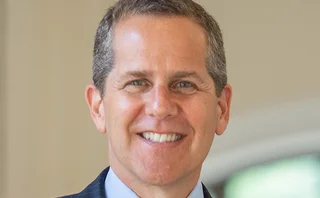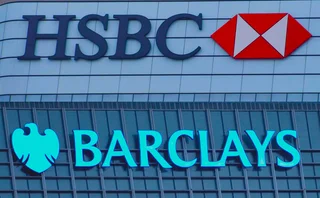
Stress on US banks rises in Q2
US banks face rising losses and continuing economic stress, with little reason for optimism in their second-quarter results, analysts say.
The second quarter saw US banks post a wave of positive Q2 results. JP Morgan posted a $2.7 billion profit, while Citi announced a $4.3 billion profit for the same period. Investor confidence in US banks rose, as shown by tightening in credit default swap (CDS) spreads: five-year senior CDS spreads referencing Citi tightened from 606bp on April 28 to 261bp at New York close on August 21. Similarly, CDS spreads on Morgan Stanley have moved in from a peak of over 1000bp in October 2008 to 167bp on August 21.
The improved picture for US banks, however, only shows one side of the story, according to an industry report published on August 21 by credit rating agency Fitch Ratings. The Fitch report highlights weakening credit quality as seriously undermining the operating results of banking companies.
Bank of America saw an unchanged loan loss provision of $13.4 billion from Q1, but its continually weakening asset quality was emphasised by Fitch. JP Morgan also carried an increase in non-performing assets and net charge-offs, despite a slight 7% decline in provisions for credit losses to $7.9 billion. Fitch does, however, expect JP Morgan to maintain reserves to cope with future losses.
The average loan loss reserve as a proportion of loans increased from 2.51% in the first quarter to 2.77% in the second quarter, up from 1.64% this time last year.
Continuing poor news from the US economy meant loan books were seeing ever-higher rates of default and late payment, according to Fitch. The agency cited commercial real estate (CRE) as a particular problem, saying it was "highly concerned with the prospect of significant deterioration in CRE, which will likely be an escalating contributor to credit problems over the next several quarters".
The US recession, which is believed to have bottomed out within the past few months, is still causing "broad-based weakness in loan quality" – including credit card losses and prime mortgages, as well as more established problem areas such as non-prime mortgages, home equity loans and construction. Retail and office property had been hit particularly hard and will remain under pressure, Fitch said.
There were some grounds for optimism – nine out of the 19 large banks that underwent stress tests earlier this year have now paid back a total of $67 billion in stock issued to the US Treasury under its Troubled Assets Relief Program by raising more capital in the open market, and some banks are also reporting higher capital markets business. But while many of the banks reported second-quarter profits, this was often only the result of asset sales, which could harm the bank's longer-term prospects by reducing business diversity, Fitch warned.
US financial risk consultancy Institutional Risk Analytics echoed Fitch's concerns – based on Q2 figures from the Federal Deposit Insurance Corporation, stress in the US banking system (excluding the largest banks) had reached record levels by the end of June, it said. The company's preliminary Bank Stress Index was at 6.87, up from 5.57 in March. But "the enormous public sector subsidies that are flowing through the largest US banks" meant the score for the entire industry was likely to be lower, once the largest banks were included: in the first quarter of the year, the final industry-wide score was 2.36. A score of 1 represents a 'normal' level of stress, as set in 1995.
IRA commented: "The apparent reasons for this large increase in stress are the number of banks that delivered deteriorating performance in terms of realised losses or charge-offs, and/or bank efficiency. We see indicators of a continued migration of banks from the A+ range, where stress fell below the index benchmark year of 1, into the A range, indicating more banks are now feeling the effects of economic conditions regardless of the business practice models they've had in place."
And this higher stress has continued into August, as represented by the ever-lengthening list of failed banks taken over by the Federal Deposit Insurance Corporation. Guaranty Bank of Texas, which went under earlier this month, was the largest bank failure in the US since Washington Mutual in September 2008, and the 81st so far this year. More are expected to follow. One analyst, Richard Bove of Rochdale Securities in New York, predicted another 150–200 could fail before the end of the year. The rate of failure has been increasing – six banks failed in January and 10 in February, but 24 failed in July and 12 so far in August.
Both Bove and Fitch predict this trend will mean higher levies from the FDIC to replenish its deposit insurance fund and meet the cost of the failures. It has already announced an additional 'special assessment' of five basis points on institutions' assets less Tier I capital, to be collected on September 30 and worth an estimated $5.6 billion. The fund's balance stood at $13 billion at the end of March this year, down 24% from three months earlier – no more recent results have yet been published.
See also: Banks' own credit risk hampers financial results
Q2 profits a false dawn for banks, Moody's says
Trading and one-off gains lift bank profits
FDIC taps insured banks for funds as reserves dwindle
Bair: FDIC needs power to take over non-bank institutions
Only users who have a paid subscription or are part of a corporate subscription are able to print or copy content.
To access these options, along with all other subscription benefits, please contact info@risk.net or view our subscription options here: http://subscriptions.risk.net/subscribe
You are currently unable to print this content. Please contact info@risk.net to find out more.
You are currently unable to copy this content. Please contact info@risk.net to find out more.
Copyright Infopro Digital Limited. All rights reserved.
As outlined in our terms and conditions, https://www.infopro-digital.com/terms-and-conditions/subscriptions/ (point 2.4), printing is limited to a single copy.
If you would like to purchase additional rights please email info@risk.net
Copyright Infopro Digital Limited. All rights reserved.
You may share this content using our article tools. As outlined in our terms and conditions, https://www.infopro-digital.com/terms-and-conditions/subscriptions/ (clause 2.4), an Authorised User may only make one copy of the materials for their own personal use. You must also comply with the restrictions in clause 2.5.
If you would like to purchase additional rights please email info@risk.net
More on Regulation
Barr defends easing of Basel III endgame proposal
Fed’s top regulator says he will stay and finish the package, is comfortable with capital impact
Bank of England to review UK clearing rules
Broader collateral set and greater margin transparency could be adopted from Emir 3.0, but not active accounts requirement
The wisdom of Oz? Why Australia is phasing out AT1s
Analysts think Australian banks will transition smoothly, but other countries unlikely to follow
EU trade repository matching disrupted by Emir overhaul
Some say problem affecting derivatives reporting has been resolved, but others find it persists
Barclays and HSBC opt for FRTB internal models
However, UK pair unlikely to chase approval in time for Basel III go-live in January 2026
Foreign banks want level playing field in US Basel III redraft
IHCs say capital charges for op risk and inter-affiliate trades out of line with US-based peers
CFTC’s Mersinger wants new rules for vertical silos
Republican commissioner shares Democrats’ concerns about combined FCMs and clearing houses
Adapting FRTB strategies across Apac markets
As Apac banks face FRTB deadlines, MSCI explores the insights from early adopters that can help them align with requirements







